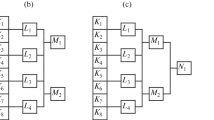Abstract
. This paper presents the design and implementation of an attribute management system that supports the specification of information, past that of the domain definition, needed to qualify an engineering analysis. The information anaged by this system includes various order tensors eeded to specify the analysis attributes of material properties, oads, and boundary conditions as well as additional data constructs used by the analysis such as strings, and references to either other attributes or model entities. The system supports general dependencies and variations of this attribute information as well as its association with the various geometric entities which constitute the geometric domain being analyzed. In addition, since the information is coupled with the model entities themselves, the system can be used to store information needed to control the discretization process of the geometric domain. Since the information can be both spatially and temporally varying, an expression subsystem was also designed into the system. The framework was designed using object-oriented techniques, implemented in C++, and can be easily maintained and extended.
Similar content being viewed by others
Author information
Authors and Affiliations
Rights and permissions
About this article
Cite this article
O'Bara, R., Beall, M. & Shephard, M. Attribute Management System for Engineering Analysis. Eng Comput 18, 339–351 (2002). https://doi.org/10.1007/s003660200030
Issue Date:
DOI: https://doi.org/10.1007/s003660200030




